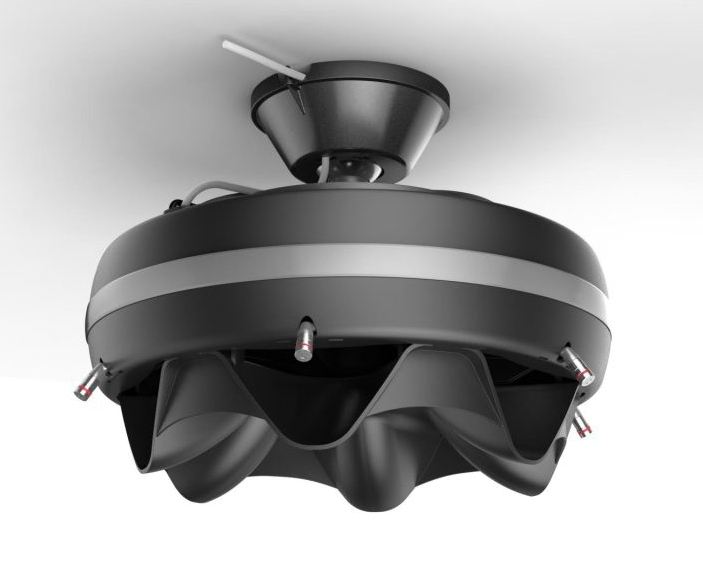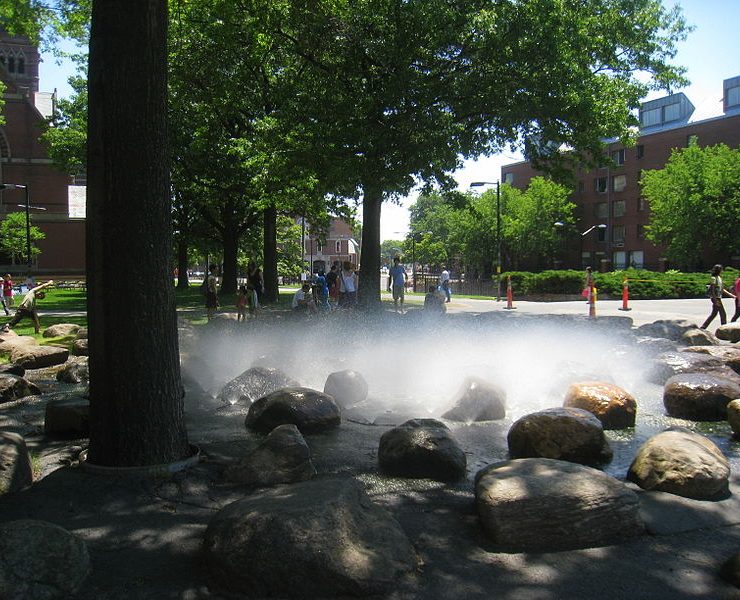mist
MistAmerica (Scottsdale, AZ) has released MiniCool, an outdoor cooling system for residential applications. Designed to…
As our business has evolved through the years, more and more often we've found ourselves involved in designing, engineering and installing waterfeatures associated with hospitals, medical centers and other healthcare institutions. These projects usually fall under the heading of "wellness gardens" or "healing gardens" - that is, spaces set aside for patients, families and staff to decompress, meditate or simply take a break. While these watershapes are generally simple in concept, there's typically more to the way they're designed and built than meets the eye - a fact that adds an extra layer of
As though it werent apparent by now, when i travel, look for watershapes.< p >
It' s been a professional practice of mine since 1986, when i started working at pool & spa news, but it was established as personal habit long before then. even child (and my parents could attest if they were still with us), drawn to water wherever went
This means I've seen and studied lots of fountains through the years. It also means that I pay lots of attention when I run into an unconventional one, as was certainly the case with the Tanner Fountain on the campus of Harvard University in Cambridge, Mass. When I saw its arrangement of stones and the wonderful way it uses mist to make the space mysterious yet strangely inviting, I was hooked.
Designed by landscape architect Peter Walker in collaboration with sculptor Joan Brigham and fountain expert Richard Chaix, the watershape sits along a busy pedestrian thoroughfare near Harvard Yard. An early and perhaps even the first example of the "Landscape as Art" movement that started at Harvard around the time the fountain was installed in 1984, the composition consists of concentric rings of granite boulders looping around 32 jets located near the center. The jets produce water sprays and a dense mist that envelops the stones like a cloud.
When I first saw the Tanner Fountain, I was immediately reminded of the inverted fountain on the UCLA campus, which I wrote about in a travelogue back in June 2013 (click here). But where the effect of the UCLA fountain was to inspire mirth (at least to my somewhat twisty mind), the Tanner Fountain simply inspires, especially on days when the air is still and the mist has its way with the space.
The video linked below shows the layout of the stones and how their placement invites observers to come close, pass within the rings and approach the source of the mist. My big regret is that I missed seeing the space covered in snow - a phenomenon that puts a completely different spin on the composition. But I still count myself lucky: I saw it on a warm late-summer day when the cooling mist was unusually welcome.
In short, I love this fountain. The next time you're in the area, stop on by - and please give yourself enough time to observe the space at your leisure, especially taking in the way people (especially children, if any are around) interact with the mist: It's a treat on more levels than I can count.
To see a brief, wonderfully informative (if deadpan) video showing the various moods and seasons of Tanner Fountain, click here.
MistAmerica (Scottsdale, AZ) manufactures MAMist, an outdoor, high-pressure cooling system featuring the company’s Ruby nozzle…
Boston’s Big Dig was essentially a Big Fix. Officially known as the Central Artery Tunnel Project, it served to repair damage done to the heart of the city by the Interstate Highway program during the 1950s and ’60s. In Boston’s case, the federal government had stepped in and inserted a primary traffic artery through what had been a downtrodden area near the waterfront. Its intentions may have been good, but I-93 ran north to south and separated the city’s historic downtown area from its storied waterfront – a disastrous decision that did little more than create decades’ worth of traffic nightmares. Ultimately, it also required remediation on a scale seldom seen in the course of human history. Planning for the project began in 1982, initiating what would become
From the streets of London to the forbidding environs of horror movies, fog has always been capable of stirring our imaginations. It's the stuff clouds are made of and an enduring symbol of mystery, and it's not too surprising that enterprising people would try to figure out how to generate and use this most elemental of atmospheric vapors as a practical tool and distinctive design element. To start our story, let's flash back to 1970, when the first-ever artificial-fog system made its debut at the World's Fair in Osaka, Japan, as part of Pepsi's revolutionary Pavilion of the Clouds. Just a year earlier, my father, cloud expert Tom Mee, had founded Mee Industries to provide instrumentation that was to enable the government to do a better job of studying clouds and airborne pollution. I can only imagine what it was like for him to receive a call from Japanese artist Fujiko Nakaya, who asked him to develop a system that would generate a cloud to would enfold the outside of a 200-foot dome as a key element of her design for the pavilion. Interestingly, Nakaya was the daughter of the man who had pioneered snowmaking technology, and I've always been intrigued that she wanted to make a
An important part of creating a human environment in harmony with nature is planning for and designing with the cycle of the seasons in mind. At our company, the Dirsmith Group, we operate with the belief that a blending of fine architecture and landscape design into our natural environment, in careful harmony with human beings, demonstrates both a reverence and a respect for nature. The result of this blended environment is that people feel good: They enjoy being in the space, and we believe it enriches the human spirit. When it comes to working with the seasons specifically, that's easier said than done in



















